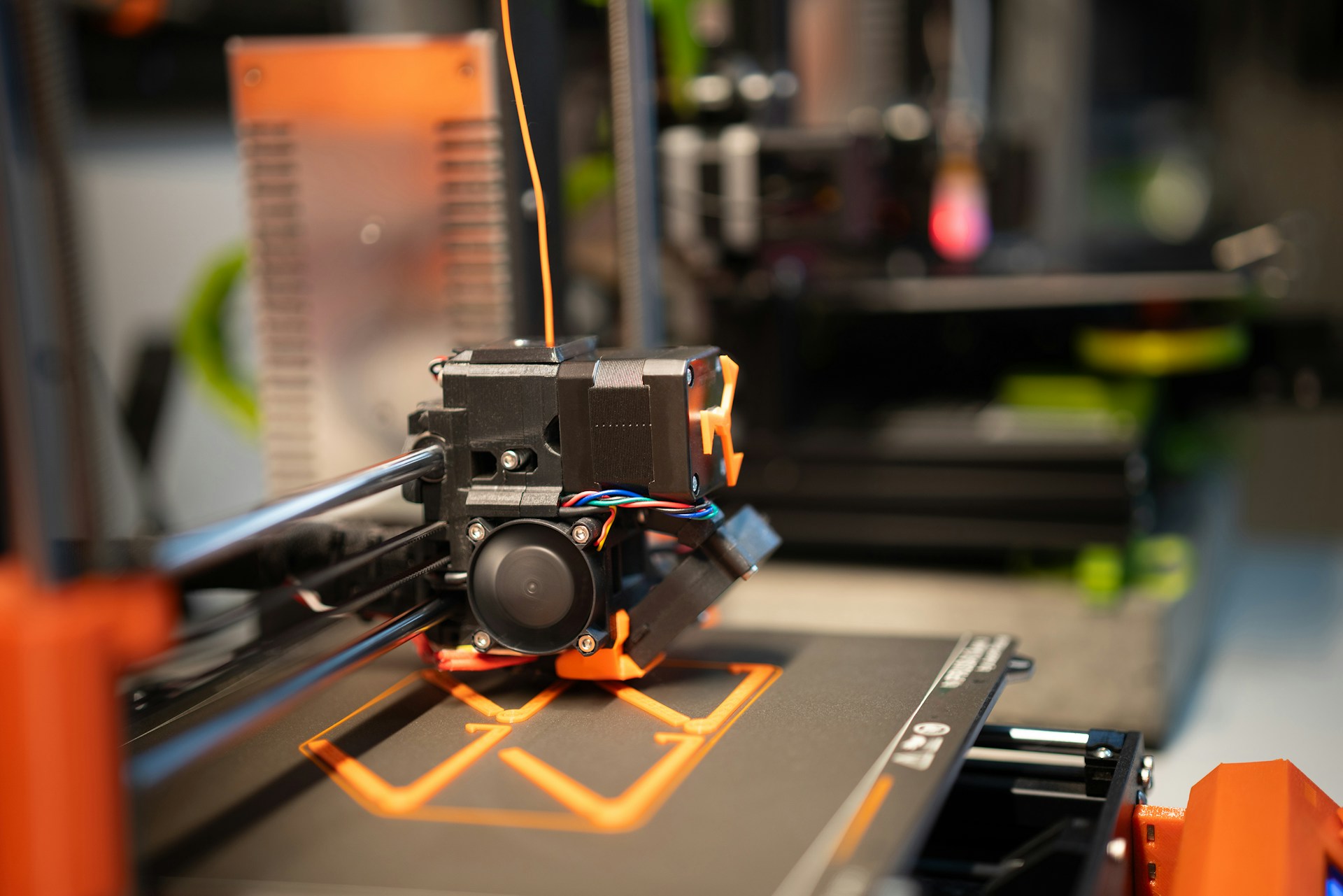



Revolutionized is reader-supported. When you buy through links on our site, we may earn an affiliate commision. Learn more here.
Those unfamiliar with three-dimensional (3D) printing often do not know which 3D print file type to use. Even those with intermediate and advanced experience cannot agree on a single option because no silver bullet exists. To understand which best fits their use case, individuals must be familiar with the most common file types.
STL is the native format for stereolithography computer-aided design (CAD) software. It is among the most common because it is universally compatible with slicer programs, so models are usually stored this way. It uses numerous two-dimensional planes to represent a 3D object—it only encodes the surface geometry, not the model’s texture or color.
This 3D print file type is beginner-friendly, making it suitable for most basic use cases. Generally, it should be the default for those unfamiliar with 3D printing. However, it is simplistic, so it may not suit their needs. In that case, they should consider alternatives.
The additive manufacturing file (AMF) was initially intended to replace STL in 2011 to provide greater flexibility. It was an upgraded version designed to address STL’s many shortcomings—like the fact that the original format could not support color or texture.
Even though its creators intended it to replace STL, it is not as widely supported. Many slicers and 3D printers do not fully support AMF files, making it less versatile. In addition to compatibility, complexity is an issue. It can store information beyond geometry, making it suitable for highly detailed, complex prints. It is ideal for those with intermediate knowledge.
The 3MF Consortium is an association formed to develop full-fidelity file formats. It designed this XML-based format for additive manufacturing. 3D Manufacturing Format (3MF) is fundamentally similar to STL—it is equally capable of storing geometric data. However, it can also store information about a full-fidelity 3D model, including texture and color.
3MF is particularly beneficial for additive manufacturing because it allows users to store printer settings associated with a specific 3D model, like infill and layer height. They can easily share these details with third parties, streamlining prototyping.
The Standard for the Exchange of Product (STEP) file format—also referred to as STP—stores the geometry and properties of a 3D model, making it suitable for more advanced use cases. It is commonly used in CAD because it provides more accurate, in-depth information on lines, arcs and curves than STL.
Since it stores exact mathematical data, it is easier to edit. Also, it typically results in much smaller file sizes than STL. Many people of varying skill levels prefer it for its ease of use. However, there are some misconceptions about its advantages.
Years ago, many slicers added support for the STEP 3D print file type, increasing its versatility. In the years following, people began believing it is better to load STEP files directly. However, that is not always the case.
Once a user imports a STEP file into the slicer, it immediately converts into a mesh. Some popular programs use a certain type of mesh conversion library that results in worse-quality prints than if they had properly exported an STL file from Fusion. Basically, a STEP-to-mesh conversion may not be as accurate with some tools.
The 3D print file type FilmBox (FBX) was developed by Kaydara, but is owned by Autodesk. It is an interchange format for importing and exporting files between 3D animation software. Although it is great for 3D modeling and transferring complex 3D scene data, it is incompatible with most slicer programs. Users must convert to an STL mesh for printing.
OBJ was first developed by Wavefront Technologies. It is a relatively simple ASCII-based 3D print file type that uses plaintext to represent the 3D geometry or complex polygonal meshes of one or more objects. It is most commonly used for storing material definitions, texture coordinates and vertex positions.
OBJ has existed for decades, so it is compatible with most tools. However, it is not universally supported. Since most CAD and 3D graphics programs support it, it is a beginner-friendly format. Individuals may run into trouble with some advanced features, though.
The Polygon file format (PLY) mainly stores geometric data. Originally, this 3D print file type was used to store data from 3D scanners. Today, it is commonly used in CAD and computer-aided manufacturing software. It is particularly useful for storing detailed information—properties like surface normals, texture, coordinates and color.
PLY is less common than STL and has different use cases. It is technically beginner-friendly, but beginners may have an easier time with STL. Notably, both store polygonal models the same way geometry-wise, so any conversion issues users encounter may be related to the model itself, not the file format.
Geometric code (G-code) is a computer numerical control and 3D printing programming language. Humans use it to tell a machine how to perform specific actions. For additive manufacturing applications, it contains commands to move printer parts.
If someone were to open the G-code in a text editor, they could read the information. However, it would be difficult to understand. Certain software can simplify it, highlighting the paths the print head will take during printing. Since it can make hundreds or thousands of movements, depending on the 3D model’s complexity, the script can be hundreds of pages long.
The average end user does not need to use or even understand G-code since software eliminates the need for manual programming. The only real use for learning it is to create unique scripts for various points during the print process—something machinists may need to do to tailor the script to their needs.
Novices should be careful when writing G-code because writing unique scripts could damage their machine if they do it incorrectly. For example, it could turn every heater to the maximum temperature, irreversibly breaking internal components. For this reason, it is not recommended to use G-code from an external source.
There is no one-size-fits-all 3D print file type. Individuals should consider their application, skill level and software compatibility before deciding which one to use. Choosing correctly can streamline the printing process and eliminate unnecessary work.
Revolutionized is reader-supported. When you buy through links on our site, we may earn an affiliate commision. Learn more here.


This site uses Akismet to reduce spam. Learn how your comment data is processed.